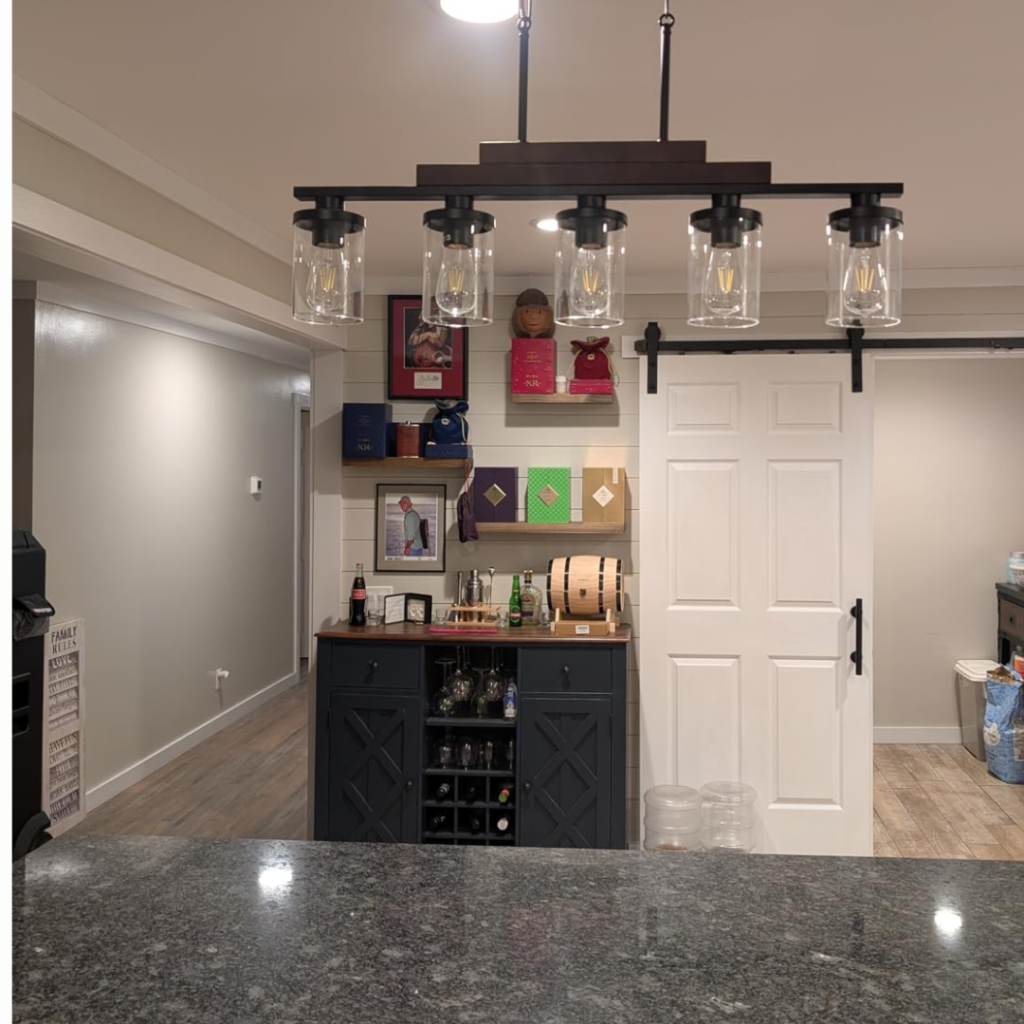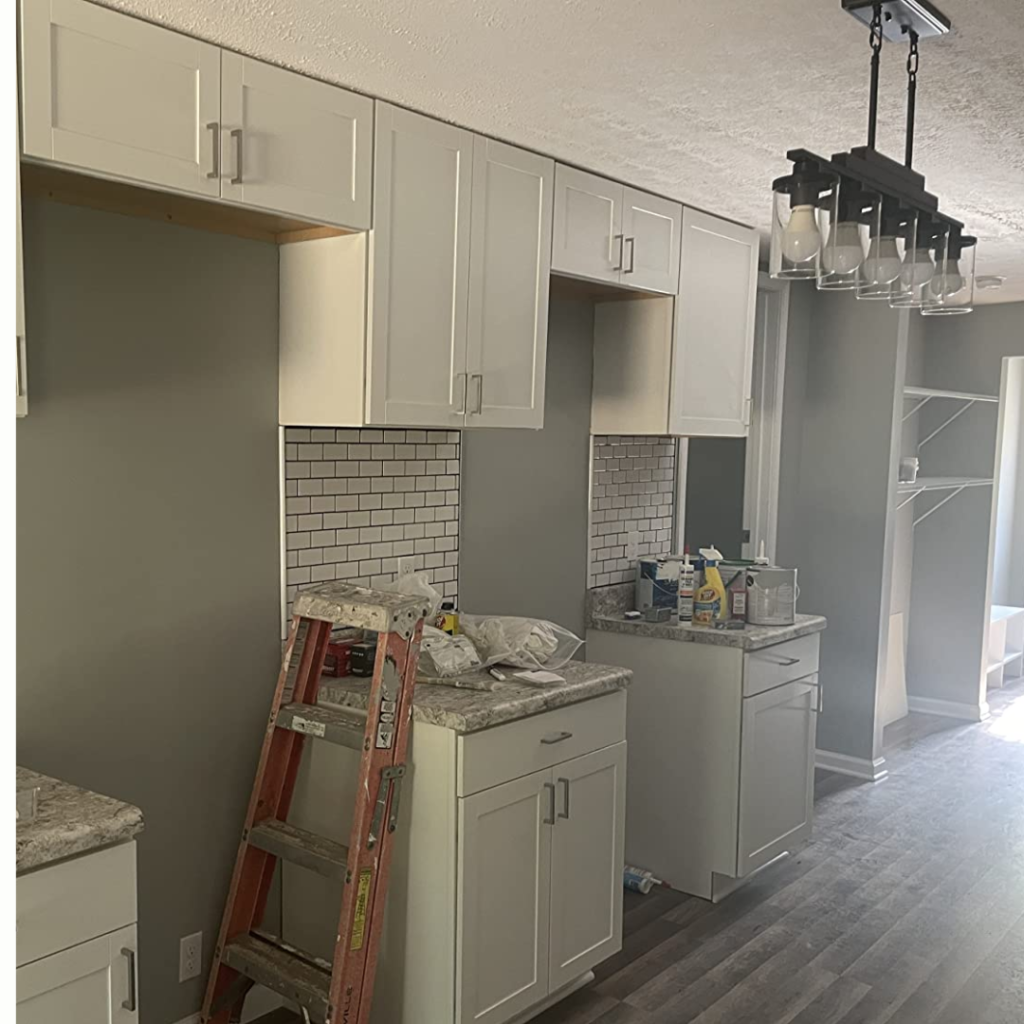A kitchen or dining space attains its atmosphere from proper lighting selection. The harsh lesson emerged while I fitted a strong chandelier in my dining area that created a horrible contrast with my kitchen hanging lights. I dedicated thorough research to understand the process of creating perfect pairings between kitchen lights and dining lights, which produces both functional and elegant designs. This guide contains essential information about matched chandeliers and pendant lights alongside helpful advice for finding excellent kitchen light fixtures above tables, which creates a cohesive space that feels inviting. Discover all possible lighting combinations that fit your taste.
Understanding the Basics of Kitchen and Dining Lighting
Lighting is more than just flipping a switch—it shapes the entire vibe of your home. I learned this the hard way when I installed bright, white LED lights in my dining area, thinking they’d enhance the space. Instead, they made every meal feel like an interrogation scene! That’s when I realized kitchen and dining lighting must be functional and atmospheric.
Why Proper Lighting Is Essential for Aesthetics and Functionality
Think of lighting as the secret ingredient in a recipe—it enhances everything but often goes unnoticed until something’s off. In the kitchen, you need bright, focused light to chop, cook, and clean safely. But in the dining area, softer, warmer lighting creates an inviting, relaxed atmosphere where meals feel special. The right lighting ensures your kitchen is practical while your dining space remains cosy and welcoming.

Key Differences Between Kitchen and Dining Room Lighting Needs
Kitchens are all about functionality. You need task lighting—think under-cabinet lights, bright overhead fixtures, and well-placed pendants. This ensures you can see every ingredient clearly while cooking.
Dining rooms, on the other hand, are about ambiance. You want a soft glow that flatters faces, enhances decor, and makes food look appealing. A well-placed chandelier or pendant with dimmable bulbs does the trick.
Overview of Common Lighting Types
There are four main types of lighting, and each serves a specific purpose:
- Pendants hang from the ceiling and are perfect over kitchen islands or dining tables. They provide direct lighting and come in endless styles.
- Chandeliers—A classic dining room favorite, chandeliers add elegance and soft lighting. Their modern designs make them great for kitchens, too!
- Recessed Lighting—Built into the ceiling, these provide general illumination. They are ideal for kitchens where even lighting is needed.
- Ambient Lighting – This is the background lighting that fills a room. It includes wall sconces, LED strips, and ceiling fixtures that enhance the overall mood.
By understanding these basics, you can create a bright and efficient kitchen and a warm and inviting dining area. And trust me, once you get the lighting right, every meal feels more special.
Choosing Kitchen Light Fixtures Over the Table
When I first chose a light fixture for my kitchen table, I thought, “Easy! Just pick something pretty.” Big mistake. The light was too small, hung too high, and made my meals feel like cafeteria lunches. After some trial and error (and a few frustrated dinners), I learned that picking the right kitchen light is an art. It’s not just about style; it’s balance, proportion, and function. Let’s let it down so you get it right the first time.
Factors to Consider
1. Size of the Table
Your table and light fixture should be in harmony. A fixture that is too small is lost, while an oversized one can overwhelm the space. A good rule of thumb? Your light fixture should be about half to two-thirds the width of your table. For example, if your table is 60 inches wide, aim for a 30-40 wide fixture.
2. Ceiling Height
Nobody wants a light fixture blocking their view or shining directly in their eyes. What is the ideal height? If you have an 8-foot ceiling, hang the light 30-36 inches above the table. Add 3 inches for every additional foot if you have a taller ceiling. This keeps the light at eye level when seated and ensures it doesn’t feel obnoxious.
3. Room Layout
Think about the flow of your kitchen. If your dining area is part of an open-concept space, your fixture needs to complement—not compete with—other lights. If you have kitchen island pendants nearby, consider a chandelier or pendant set that shares similar elements (color, finish, or shape) to create cohesion.
Best Styles for Different Kitchen Aesthetics
Choosing a light fixture is like picking the perfect outfit—it should match the room’s vibe. Here are some go-to styles based on different aesthetics:
- Modern Kitchens – Sleek, minimalist pendant lights with clean lines and metallic finishes (brushed nickel, matte black, or chrome) work best. Try a geometric chandelier for a statement piece.
- Rustic Kitchens – Think wood accents, lantern-style pendants, or industrial-inspired fixtures with warm Edison bulbs.
- Industrial Kitchens – Exposed bulbs, metal shades, or cage pendants give that raw, edgy feel.
- Traditional Kitchens – Classic chandeliers with glass or crystal details add elegance.
- Farmhouse Kitchens – Oversized dome pendants, distressed finishes, or vintage-style chandeliers bring cosy charm.

Common Mistakes to Avoid
1. Choosing a Light That’s Too Bright’s Too Dim
You want a warm, inviting glow, not a spotlight or a cave. Look for fixtures with dimmable bulbs that can be adjusted to adjust the brightness for different moods—brighter for homework sessions and softer for cosy dinners.
2. Ignoring Scale and Proportion
A tiny pendant over a long table is awkward. A massive chandelier in a small nook is overwhelming. Make sure your fixture is proportionate to your table and space.
3. Forgetting About Color Temperature
Lighting isn’t just an abominable fixture—it’s about theirs, too. Stick to 2700K -3000 K for a warm, cozy glow. Anything higher (like cool white or daylight bulbs) can make your space feel harsh and uninviting.
Considering these factors, you’ll find the perfect kitchen table light—beautiful and functional. Trust me, the right light transforms the way your kitchen feels, making every meal more enjoyable.
Kitchen Hanging Lights Over the Table: What Works Best?
Ever sat down for a meal and felt like you were under a spotlight—or worse, in a dimly lit cave? I’ve been there. When I first picked hanging lights for my kitchen table, I thought, “Eh, any pendant will do.” Spoiler: It didn’t. The lighting was either too bright or too dull, and the whole vibe felt off.
Here’s what I learned (so you don’t have to go through the same struggle).
Balancing Brightness and Ambiance
The key to perfect kitchen lighting? Balance. You want enough brightness to see your food clearly (because no one likes mystery meals), but not so much that it feels like a hospital cafeteria. The trick is layered lighting—a mix of ambient, task, and accent lighting.
Quick fix: Choose dimmable pendant lights. They let you switch from bright (for meal prep or homework) to cozy and warm (for late-night snacks or romantic dinners).
Popular Pendant Light Designs and Their Impact
Not all pendant lights are created equal. Some scream “modern elegance,” while others whisper “rustic charm.” The style you choose sets the mood of your space.
- Globe pendants – Clean, modern, and versatile. Great for minimalist spaces.
- Lantern pendants – A touch of vintage charm. Perfect for farmhouse kitchens.
- Industrial cage lights – Exposed bulbs + metal frames = edgy, urban vibes.
- Glass pendants – Light and airy, ideal for smaller spaces where you don’t want bulky fixtures.
- Cluster pendants – A group of small lights hanging at different heights? Instant drama and elegance.
Pro tip: Match your pendant style with your dining room chandelier for a seamless look. They don’t have to be identical—just complementary in finish or shape.
How Many Lights Do You Need?
This was a game-changer for me. At first, I had one lonely pendant in the middle of my table. It looked…sad. Then I added two more, and suddenly, my kitchen felt balanced.
Here’s a simple formula:
- For small tables (36 inches or less), → one medium-sized pendant works.
- For medium tables (36–48 inches wide): → Two evenly spaced pendants.
- For long tables (48+ inches wide) → Three or more pendants, spaced about 24–30 inches apart.
Golden rule: The bottom of your pendant should hang 30–36 inches above the table. Too high? It won’t light the space well. Too low? It’s in your face (literally).
Real-Life Examples and Inspiration
Nothing beats seeing a well-lit space in action. When I was revamping my kitchen and dining lighting, I spent hours scrolling through Pinterest, flipping through home design magazines, and even visiting showrooms to see real-life examples. And guess what? Some pairings were breathtaking, while others… well, let’s just say they taught me what not to do.
Beautifully Paired Kitchen and Dining Lights
Let’s dive into some inspiring lighting combinations that can help you achieve a cohesive and stylish look in your home:
1. The Modern Minimalist
- Kitchen: Sleek black metal pendant lights hang over a marble island.
- Dining: A geometric chandelier in matte black with exposed bulbs.
- Why It Works: The clean lines and consistent finish create a seamless, contemporary look.
2. The Cozy Farmhouse
- Kitchen: Rustic wooden beam pendants with Edison bulbs.
- Dining: A wrought-iron chandelier with candle-style lights.
- Why It Works: The warm, inviting glow and natural materials complement each other without overwhelming the space.
3. The Industrial Edge
- Kitchen: Dome-style metal pendants with a weathered finish.
- Dining: A long linear chandelier with exposed bulbs and pipe-like detailing.
- Why It Works: The rugged aesthetic and consistent metal finishes bring a raw yet cohesive feel to the space.
4. The Timeless Classic
- Kitchen: Glass globe pendants with brass accents.
- Dining: A statement chandelier with crystal elements and a matching brass finish.
- Why It Works: The glass elements make the space feel open and airy, while the brass detailing adds a touch of elegance.
My Personal Experience: What Worked and What Didn’t
When I first attempted to match my kitchen and dining lights, I made a big mistake—I picked a bold, oversized chandelier for my dining table and paired it with small, understated pendant lights in the kitchen. The result? A lopsided look that made my kitchen feel like an afterthought.
So, I went back to the drawing board. Here’s what finally worked for me:
- I chose medium-sized glass pendants with brass accents for my kitchen island. They provided enough light without overwhelming the space.
- For the dining area, I opted for a matching brass chandelier with a soft, curved design to balance the straight lines of the pendants.
- I installed dimmable bulbs in both fixtures, allowing me to adjust the brightness depending on the mood.
The result? A perfectly harmonized space that feels cohesive and inviting. And the best part—I don’t cringe every time I walk into my dining room anymore!
Key Takeaways
- Stick to a cohesive color palette and material for a unified look.
- Size matters—avoid overpowering or underwhelming the space with mismatched proportions.
- Experiment with layering by using different lighting styles while keeping some elements consistent.
- Dimmable lights can be a game-changer in achieving the perfect ambiance.
By learning from real-life examples and a few personal missteps, you can create a kitchen and dining space that not only looks beautiful but also feels warm and functional.
FAQs
What is the best height for hanging kitchen lights over a dining table?
A good rule of thumb is to hang your dining table light fixture 30–36 inches above the table for an 8-foot ceiling. If your ceiling is taller, add 3 inches for every extra foot. This ensures the light isn’t too harsh or too dim while keeping sightlines clear. Dimmable bulbs? Even better, they let you switch from bright and focused to soft and cozy with ease.
Should the kitchen island and dining lights match?
They don’t have to be identical twins, but they should be distant cousins! The key is to maintain a cohesive look by matching the finish, shape, or style. For example, if you have matte black pendants over your island, choose a chandelier with similar black accents for the dining table. Mixing styles is fine—just keep at least one element consistent to avoid visual chaos.
How many pendant lights should I use over my kitchen island?
It depends on your island’s size! Here’s a simple breakdown:
- Small islands (less than 4 feet long): One large pendant or two small ones.
- Medium islands (4–6 feet long): Two to three evenly spaced pendants.
- Large islands (over 6 feet long): Three to four pendants, about 24–30 inches apart. Make sure each pendant hangs 30–36 inches above the countertop for optimal lighting and aesthetics.
What are the best lighting trends for open-concept kitchen and dining spaces?
Right now, it’s all about balance and layering! Here are some top trends:
- Mixed metals – Gone are the days of matchy-matchy fixtures. Pairing brass with matte black or brushed nickel with gold creates depth and interest.
- Oversized statement lights – Big, bold chandeliers or pendant clusters make a statement in open spaces.
- Dimmable and smart lighting: Customizing brightness levels to suit different moods is a game-changer.
- Layered lighting – Combine recessed lights, pendants, and under-cabinet lighting for a functional and stylish look.
- Linear chandeliers – Perfect over long dining tables, they add a sleek, modern touch.
How do I choose the right lightbulbs for kitchen and dining areas?
Lightbulbs can make or break the vibe. Here’s what to consider:
- Warm vs. Cool Light: Stick to 2700K–3000K (warm white) for a cozy, inviting feel in dining areas. Kitchens can go slightly cooler (3000K–4000K) for clarity while cooking.
- Brightness: Use around 300–400 lumens per square meter in the dining room and 500–800 lumens per square meter in the kitchen for proper illumination.
- Dimmable Bulbs: Always a good idea! They let you adjust the ambiance for different times of the day.
- LEDs Over Incandescents: They last longer, use less energy, and come in various color temperatures.
By choosing the right bulbs and fixtures, you’ll create a space that’s both functional and beautiful!
Conclusion
Pairing kitchen and dining lights requires a blend of functionality, aesthetics, and cohesion. By considering proportions, finishes, and layering techniques, you can create a warm, inviting space that enhances your home’s overall ambiance. Don’t be afraid to experiment—find a lighting style that suits your space and personality!

I’m a writer and culinary expert with over 10 years of experience in the kitchen. As a graduate of the Institute of Culinary Education and a passionate home chef, I created KitchenBreez.com to share my knowledge of kitchen techniques, cooking tips, and the best kitchen gadgets. Whether you’re a seasoned cook or just starting, my goal is to help you make your time in the kitchen more efficient and enjoyable.
